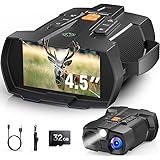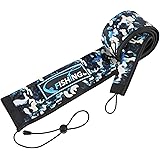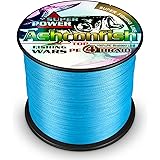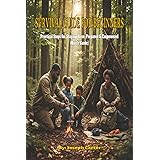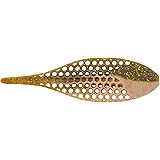The Ultimate Guide to the Smallest Survival Kit: Your Compact Lifeline
In a world full of uncertainties, from unexpected power outages to getting lost on a hiking trail, the feeling of being unprepared can be daunting. Many people envision bulky backpacks and extensive gear when they think about survival, but what if your essential lifeline could fit into the palm of your hand? As you saw in the video above, the concept of a “survival kit in a can” offers an incredibly compact solution to this very common issue.
This smallest survival kit is a testament to ingenious design, packing an impressive 32 essential items into an unassuming container. It transforms the intimidating task of emergency preparedness into an accessible, everyday reality. Understanding the utility of each item within such a compact setup can dramatically enhance your confidence and capabilities when facing unforeseen challenges.
Why a Compact Survival Kit is Indispensable
Modern life, while convenient, often leaves us vulnerable to disruptions. Studies consistently show that a significant portion of the population is ill-prepared for emergencies, with many lacking even a basic emergency kit at home or in their vehicle. This gap in preparedness highlights the critical need for accessible solutions.
A compact survival kit serves as your immediate, grab-and-go solution for minor inconveniences or even critical situations. Its small size ensures it can be carried effortlessly, whether clipped to a backpack, stashed in a glove compartment, or kept in a desk drawer. This portability means you are always just a moment away from having crucial tools at your disposal, a key factor in improving outcomes during unexpected events.
Breaking Down the “Survival Kit in a Can”: 32 Essentials Explained
The ingenuity of this compact survival kit lies in its careful selection of items, each serving multiple purposes. Here, we delve deeper into the 32 essential items mentioned in the video, exploring their practical applications in a survival scenario.
Fire Starting & Light
- Book of Matches & Bigger Matches: Essential for starting fires for warmth, cooking, water purification, and signaling. Having both small and larger varieties offers versatility.
- Candle: Provides a sustained flame for light, warmth in a confined space, or as a fire starter. It can also be used to melt snow for water.
Signaling & Navigation
- Whistle: A loud, distinct sound travels further than the human voice, making it invaluable for signaling for help, especially in noisy environments or over long distances. Experts suggest three short blasts as a universal distress signal.
- Signal Mirror: Capable of reflecting sunlight over vast distances, this tool can alert rescuers to your position from miles away, even beyond audible range.
- Mini Compass: A fundamental tool for land navigation, allowing you to maintain a sense of direction and prevent getting further lost.
Shelter & Repair
- Duct Tape: The quintessential multi-purpose item. It can repair torn clothing, patch holes in tents, create makeshift bandages, secure splints, or even create a water-tight seal. Its versatility is legendary in the survival community.
- Ziploc Bag: Excellent for keeping small items dry, collecting water, or even creating a mini-greenhouse effect to condense moisture.
- Twisty Ties: Useful for securing gear, organizing cables, or quick, temporary repairs.
Cutting & Tools
- Small Hidden Blade: Provides a sharp edge for cutting cordage, opening packages, or light processing tasks.
- Multi-Purpose Survival Card: Often includes wrenches, bottle openers, saws, and other small tools. This compact item maximizes functionality within minimal space, effectively replacing several single-purpose tools.
Cordage & Fasteners
- Thin Rope & Thicker Rope: Crucial for building shelters, setting snares, creating fishing lines, drying clothes, or securing gear. Having different thicknesses allows for various tasks.
- Two Paper Clips: Surprisingly versatile. They can be straightened into wire, used as a fishing hook, a lock pick, or even a mini-tool for intricate tasks.
Fishing & Foraging
- Two Fish Hooks: Combined with some line (from your rope) and a bit of bait, these can provide a vital food source in a wilderness scenario.
Hygiene & Medical (Basic)
- Sewing Needle: Essential for repairing clothing, gear, or even for removing splinters. It’s a small item with significant utility for comfort and health.
Communication & Documentation
- Paper: Useful for leaving notes, writing down observations, signaling with a message, or even as tinder for fire starting.
Maximizing Your Smallest Survival Kit: Practical Applications
The true power of this compact survival kit emerges when you understand how to utilize each item effectively in various scenarios. For instance, imagine being caught in unexpected bad weather during a hike; the candle and bigger matches could help you start a small, life-saving fire for warmth. Furthermore, the whistle and signal mirror become critical tools if you’re disoriented and need to call for help, potentially reducing rescue times by several hours.
Consider a situation where you need to make a quick repair to your backpack or tent. The duct tape, with its incredible adhesive properties, can temporarily fix rips, preventing further damage and maintaining functionality. Moreover, the thin and thicker ropes are indispensable for building a makeshift lean-to for shelter, securing food out of reach of animals, or even creating a sling for an injured limb.
Even the seemingly mundane items like paper clips hold surprising utility. They can be bent into a rudimentary fishing hook if you lose your primary ones, or used to manipulate small mechanisms. The multi-purpose survival card replaces the need for several larger tools, offering capabilities like opening cans or tightening bolts, demonstrating efficient space usage for maximum impact.
Beyond the Can: Augmenting Your Everyday Carry for Preparedness
While an all-in-one “survival kit in a can” is an excellent starting point, consider it the foundation of your personal preparedness strategy. Experts often recommend a tiered approach to readiness, beginning with your everyday carry (EDC). This includes items you carry daily, such as a quality knife, a reliable flashlight, and a small amount of cash.
For those venturing into more remote areas, augmenting this compact kit with a slightly larger, yet still portable, ‘go-bag’ is advisable. This might include a more substantial first-aid kit, additional water purification tablets, and extra layers of clothing. The key is to match your preparedness level to your likely activities and potential risks, ensuring you have the right tools for the job without being overburdened.
The Psychology of Preparedness: Why Small Steps Matter
The journey to preparedness doesn’t need to be overwhelming; it’s a series of small, manageable steps. Having a smallest survival kit, like the one featuring 32 essential items, fosters a sense of security and self-reliance that extends beyond its physical contents. Knowing you have basic tools to address common problems can significantly reduce panic and improve decision-making during stressful situations, which studies show is critical for survival outcomes.
Embracing a mindset of readiness starts with practical items like a compact survival kit. It empowers individuals to take charge of their safety, transforming potential helplessness into capability. This small, yet mighty, collection of items truly represents a lifeline, offering peace of mind and tangible solutions when they are needed most.



